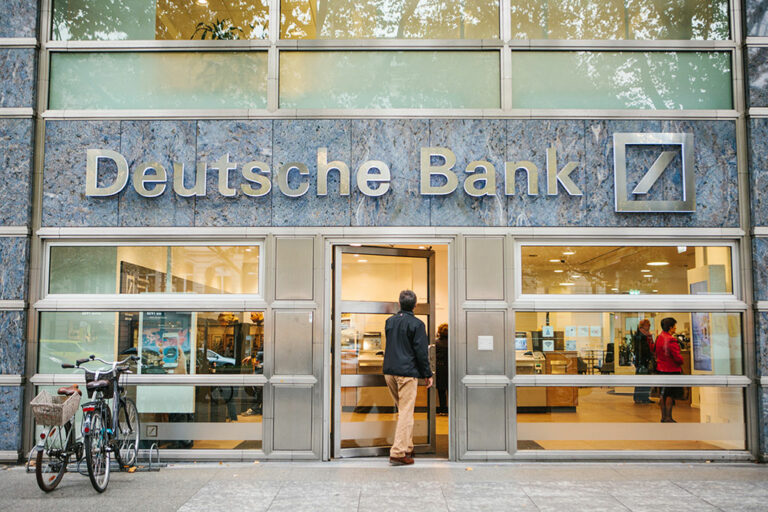Deutsche Bank is addressing regulatory challenges faced by institutions using public blockchains, particularly issues related to transacting with sanctioned entities or criminals, through its Project Dama 2 initiative.
Deutsche Bank AG has undertaken a major task of addressing regulatory challenges faced by institutions using the public blockchain network. This typically includes addressing issues of unintentionally transacting with sanctioned entities or criminals.
In November, the German banking giant introduced a test version of Project Dama 2, an asset-servicing pilot that incorporates a Layer 2 solution. This toll basically leverages public blockchains thereby allowing cheaper and efficient transactions.
Deutsche Bank has integrated this Layer 2 platform with the Ethereum network, which is a leading blockchain platform for commercial activity in the crypto space. However, Boon-Hiong Chan, the bank’s Asia-Pacific industry applied innovation lead, highlighted that public blockchains like Ethereum pose significant risks for regulated banks.
These include concerns about transaction validation transparency, potential payments to sanctioned entities, and the risk of sudden hard forks that could disrupt the digital ledger. “Using two chains, a number of these regulatory concerns should be able to be satisfied,” Chan said.
Deutsche Bank Experiments with Project Dama 2
Project Dama 2 is a key component of the Monetary Authority of Singapore’s Project Guardian. It is also a collaborative initiative that includes 24 financial institutions exploring blockchain technology to tokenize assets.
Deutsche Bank has been an advocate of blockchain technology and sees it as a major solution to margin compression in the financial services sector. However, there have been questions over the extent to which banks should engage with the crypto ecosystem.
The Dama 2 platform, developed in partnership with crypto firms Memento Blockchain Pte and Interop Labs, is built on ZKsync technology. Deutsche Bank plans to launch the platform as a minimum viable product next year, pending regulatory approval.
Boon-Hiong Chan stated that the Layer 2 component will allow banking institutions to explore public blockchains more freely. Besides, it would also allow them to create a tailored list of validators responsible for processing digital-asset transactions and earning rewards.
Furthermore, Chan believes that the system could provide regulators with “super admin rights”, thereby allowing them to monitor fund movements whenever necessary. “You are not dependent on the Layer 1 for detailed transaction records anymore,” Chan said.
On the other hand, Deutsche Bank has been forging key partnerships in the crypto space. Last week, Crypto.com announced a significant move to enhance its global operations by partnering with Deutsche Bank. The new partnership allows Crypto.com to tap into Deutsche Bank’s extensive corporate banking expertise to address its daily financial operations, including payroll, vendor payments, and treasury management.
next